Dublin-born choreographer Michael Keegan-Dolan's Teaċ Daṁsa company was established in 2016 when his Fabulous Beast Dance Theatre moved from the Irish midlands to the West Kerry Gaeltacht.
From early triumphs like Giselle (2003), The Rite of Spring (2009) and Rian (2013), to the monumental Swan Lake / Loch na hEala (2016) and MÁM (2019), Keegan-Dolan has time and again proved himself as a creative force to be reckoned with. Filmmaker Pat Collins' acclaimed documentary film The Dance (2021) offered an intimate look at the creation of MÁM, and Keegan-Dolan's creative processes.
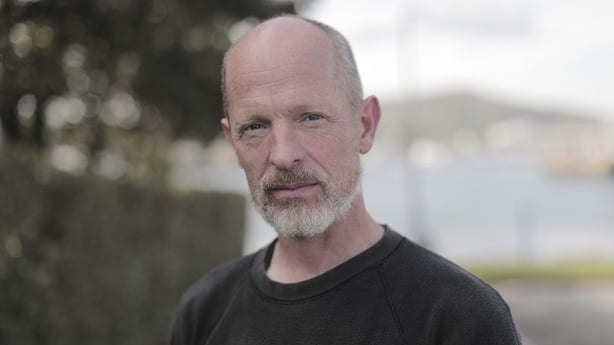
I don't make good work when I'm not in Ireland". (Pic: Rich Gilligan)
Now MÁM returns to Ireland for its biggest dates yet - a two-night stand at Dublin's Bord Gáis Energy Theatre this July. In addition, his acclaimed autobiographical show How to be a Dancer in Seventy-Two Thousand Easy Lessons, performed by Keegan-Dolan and his partner and collaborator Rachel Poirier, will play dates over the coming months at the Galway Arts Festival, the Pavilion Theatre in Dun Laoghaire and Sounds from a Safe Harbour in Cork.
The below conversation, then, offers a brief snapshot into the brilliant mind of Michael Keegan-Dolan.
MÁM finally got to play venues nationwide last summer, after the initial run of the show was curtailed by lockdown. Has the show finally had the life that you had hoped for it?
Well, that version of the show was designed to tour Ireland and mostly rural Ireland, and mostly not in theaters. It was an extraordinary kind of a tour. It was six weeks. There were 14 venues involved. There were 32 people on the road in the winter. And we were taking the show to the Mullahoran GAA Center, to the Portarlington Community Center, to the sports complex in Boyle. And we had to design a version of the show that could go up really quickly in venues that had no lighting bars, that had no seats. These are like basketball courts.
We need your consent to load this rte-player contentWe use rte-player to manage extra content that can set cookies on your device and collect data about your activity. Please review their details and accept them to load the content.Manage Preferences
Listen: Michael Keegan-Dolan talks to Ryan Tubridy
But I wanted to do that, and I'm really excited by that equation. When you bring something that could be perceived of as having been made for the Théâtre de la Ville in Paris or Sadler's Wells in London or the Brooklyn Academy of Music, and you bring it to the Mullahoran GAA center... What that means philosophically, in terms of many complicated ideas. So that was that version of the show. You're stripping it to what you can get up in six hours. And the decisions involved don't necessarily benefit the quality of the work entirely. Sometimes you have to make compromises in order to allow it to meet an audience in Cavan on that particular night. And that's cool.
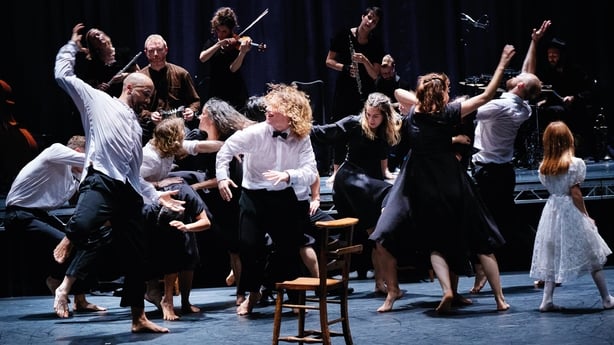
So, when the opportunity came to perform it in the Teatro Malibran in the Venice Biennale, I figured, "Oh, wouldn't it be cool to do it again in its full version in a theater in Dublin?" And just by chance the Bord Gáis was available. And one chance led to another chance, to another chance, and now we're getting to do it in the Bord Gáis, which is a 2000 seater. So that's kind of fun and exciting.
So in a sense, to answer your question, I think at the end of this year, maybe you'd feel like for the amount of work and love and energy that went into the creating that show now it will have had its life. It's like, it's kind of gone as small as it can go, and it's gone as big as it can go.
What happens in a hall in West Kerry can happen in a 2000-seat theatre.
How does your perception of the work change, as you send it into the world?
This sounds a bit hokey - hokey being a very complicated word (laughs). But my perception of the show changes depending on who I'm watching it with. If I'm sitting in an audience with 300 people who are completely taken by it, then the way I start to perceive it shifts, and the show shifts. If you're sitting in an audience who are resisting it, and if you're sitting beside someone who, maybe, who's actively disliking it, it changes my perception of the show. So, I see the show differently depending on who I'm watching it with. And that's always really interesting. It's sometimes really challenging.
In Mullahoran, in Cavan, when I went to see it, something really extraordinarily happened. I don't know what it was, but I was there when it happened and there were people walking up to me who had been transformed. I could see it in their eyes. And then another night, people are walking up to me not really knowing what to say because they haven't really gotten it. So I learned that the show can be many, many things, and because of the way it was conceived and cause of the way I work, it definitely is contingent on the participation of the audience. So if they're not participating...
What was interesting about the show (How to be a Dancer...) at The Gate was there were a lot of actors who came backstage because they wanted to see Rachel, or they wanted to say how much the show had moved them. But one of them came three times, and they said the second time wasn't the same. The third time wasn't the same. The first time had been the one. So it makes me realize that this live theater thing is an extraordinary science. And it's just the way it is. It can be cruel.
When they filmed the show at The Gate, it was the matinee, I looking at it with Rachel. And I'd never seen the show, because I was in it. And Rachel said, "That wasn't a very good one." I said, "Why wasn't it a good one? I thought it was great." She goes, "Well, the audience just weren't really with us. You could feel like they had come because someone had told them about it and they were kind of sitting there going, "Show us what you've got. Or get the f**k out of here." (laughs)
The two shows sit very comfortably together, in many ways.
Well, in truth, so How To Be A Dancer... and MÁM were one show at one point in my head. And I had the good fortune to be given a residency in Wellington in New Zealand, because we had brought a lot of shows there over the years, and they offered me a residency after Swan Lake. They were so grateful, I guess, for having brought Rian and Giselle and Swan Lake to New Zealand. They gave me this amazing residency. And I workshopped a version of the show, which had the text from How To Be Dancer... and the music from MÁM. And I was working with the Mikel Murfi at the time, the actor. And then I realized in New Zealand that these two things just couldn't function together, because one was quite cerebral and narrative based, and the other was completely poetic and kind of free-falling...
You didn't want to crowbar the two together.
Well, I was excited by trying to do that, but I came to the conclusion that I wasn't - and don't mean to be self-effacing - I actually wasn't a good enough artist maybe yet to pull that particular one off (laughs). So I separated them out. I said they're two different shows. I go after that one, I go after this one. And a lot of people were trying to talk me off the ledge with How To Be A Dancer. A lot of good friends were like, "I wouldn't be doing it if I were you." And Mikel didn't want do it, in the end. So I ended up going, "You know what?"
The two of you had already done some incredible work together...
We'd gone really down the rabbit hole in Swan Lake. It's like diving with someone. If you go diving, we've gone quite deep together. So I really, really trusted him and loved him. I figured if anyone was going to do that role in that show, it could be him. But he didn't want to do it. And I couldn't really think of anyone else. So then I ended up doing it, and I had the Covid time to learn my lines.
I think I make my best work here. I don't make good work when I'm not in Ireland.
Taking MÁM to the Bord Gáis Energy Theatre feels like a statement of sorts, for a contemporary Irish choreographer to bring a new work to such a massive stage.
It does. And a venue like that, one that's built for massive shows. It's a new hill to climb. It feels like that. The reason why I said yes to the idea... Well, there's a couple of reasons. One, I would connect to Seán Ó Riada, in this kind of slightly abstract tangent I'm going to take, but very briefly. So when Ó Riada did Ó Riada Sa Gaiety and took his music into The Gaiety and put it into that kind of gilded, red-seated vaulted theater. He took something from the countryside, from the cottages, from the hedges, he put it in this Edwardian Theater. When (Druid Theatre director) Garry Hines talked about putting a show on Inis Oírr, and then putting it on the Lincoln Center, my ears pricked up. What does that mean?
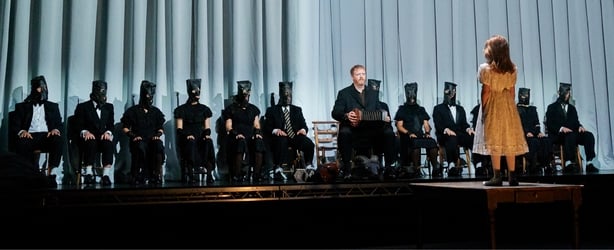
So the meaning for this for me is that what we sometimes think is high culture, we sometimes think that it needs to happen in an opera house in Paris or Berlin or London, at the Sydney Opera House. But in fact, highness is not contingent on... volume. The architecture of a venue, or the wealth of the nation that built that venue. The highness is to do with the quality and the intensity and the beauty of the connection that unfolds in the act of making that culture, and in the act of presenting that culture. So you do not need to be in a 2000-seat venue or be a millionaire and wear a suit. However, inversely, a show that was made in Halla na Feothanaí in West Kerry can sit in this venue.
So I'm kind of making that point is that what happens in a hall in West Kerry can happen in a 2000-seat theatre. And what happens in a 2000-seat theater can happen in the hall in West Kerry. It's not about the architecture, it's not about the empire, it's not about anything. It's about connection.
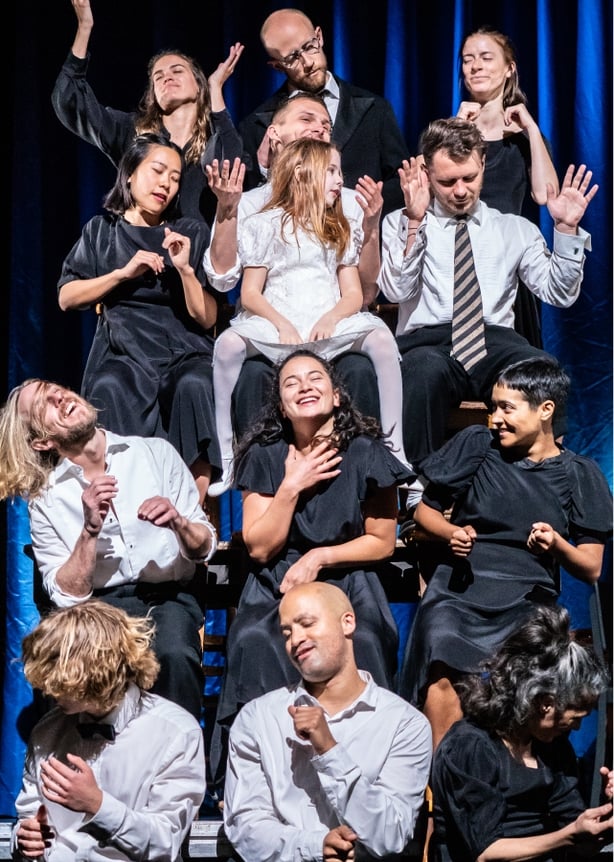
In terms of addressing your own past, it felt like there was a lot of healing in the show.
The thing about doing it publicly, it's like someone getting married publicly or someone getting baptized publicly or someone getting buried publicly. People walking up. I was at a funeral last week, someone going up to the altar and talking about their now deceased husband publicly and saying how much I love this man publicly. There's something about that importance of that. And this is where theater has parallels. Theater is ritual. Good theater is ritual. And for me, it was about, this is ritual. I need to say this in front of a bunch of potential strangers. All the better for it being at The Gate, in Dublin. I didn't talk about anything in the show that I hadn't already done the internal process of healing and work on, because I'm not one for using theatre as personal therapy. An uncomfortable thing where you're just out in the bloody open. I don't want to be doing that because that reduces the space for the audience to have their own process, for the third thing to happen where the two things meet, but to proclaim it publicly in front of people was for me, part of the healing, inverted commas, process. It's funny though, Dublin doesn't feel like my own town anymore, but it's where I grew up.
Does West Kerry feel like home?
Home is the Midlands, is in the bog of Longford. The coalface, the dig is West Kerry. That's where the work is done. And there's currently lots of archeological digs happening in West Kerry because there's a lot of archeology in West Kerry. And I'm having my own dig, which is more of a metaphorical dig. Because in some sense, that's where the artifacts are hidden, in terms of the remnants of the language, the remnants of the music, the stories, the narrative is extremely rich in West Kerry. It's a great place to be an artist.
You're an international artist who has chosen to make work here, which again is a statement of sorts.
Well, I think I make my best work here. I don't make good work when I'm not in Ireland. I mean, I make average work when I'm not in Ireland. I have no choice.
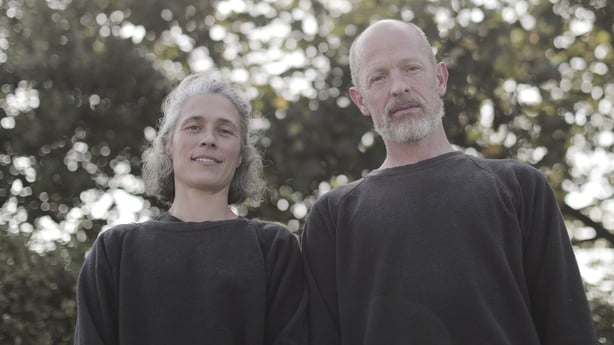
Are you ready to start the next show?
I'm making a new show next year. It's started already. The new show started during kind of that space, the Covid space, where nothing was happening. The great nothing. And my mother was dying, not because she was sick, because she was old. And that was okay, because she was 96. I mean, she's my mum, I'm going to miss her, but she's 96. So when someone's born and when someone's died, these are incredible thresholds. They're like dawn and dusk. Absolutely. The reckoning moment. So the next show came out of that moment, and I'm working on that show now.
And do you know what it is yet?
Uh... no (laughs).
What are you excited about right now?
I'm excited about all of the stuff we're about to do. I'm excited about sitting in the Bord Gáis watching MÁM. I'm excited about going to Galway. I haven't been in the Galway Arts Festival in about over 10 years. I'm excited about making a new show. But as I'm using the word excited, I can feel a little voice in my head saying, "Michael, that's not true." Excitement is not something that I necessarily experience a whole lot of anymore. And that doesn't mean I'm getting old and jaded from it all. It's never really, for me, been about the excitement. It's about, "I have to do this. So if I don't do this, that's a problem for me." So I'm doing what I have to do and I get a sense of relief that I'm doing what I have to do. I wish I could say I was excited.
It keeps you off the streets...
Keeps me off the streets. Keeps me out of hospital (laughs).
MÁM is at the Bord Gais Energy Theatre, Dublin, on July 13th and 14th, and How to be a Dancer in Seventy-two Thousand Easy Lessons is at the Galway Arts Festival from July 17th – 22nd. ,


